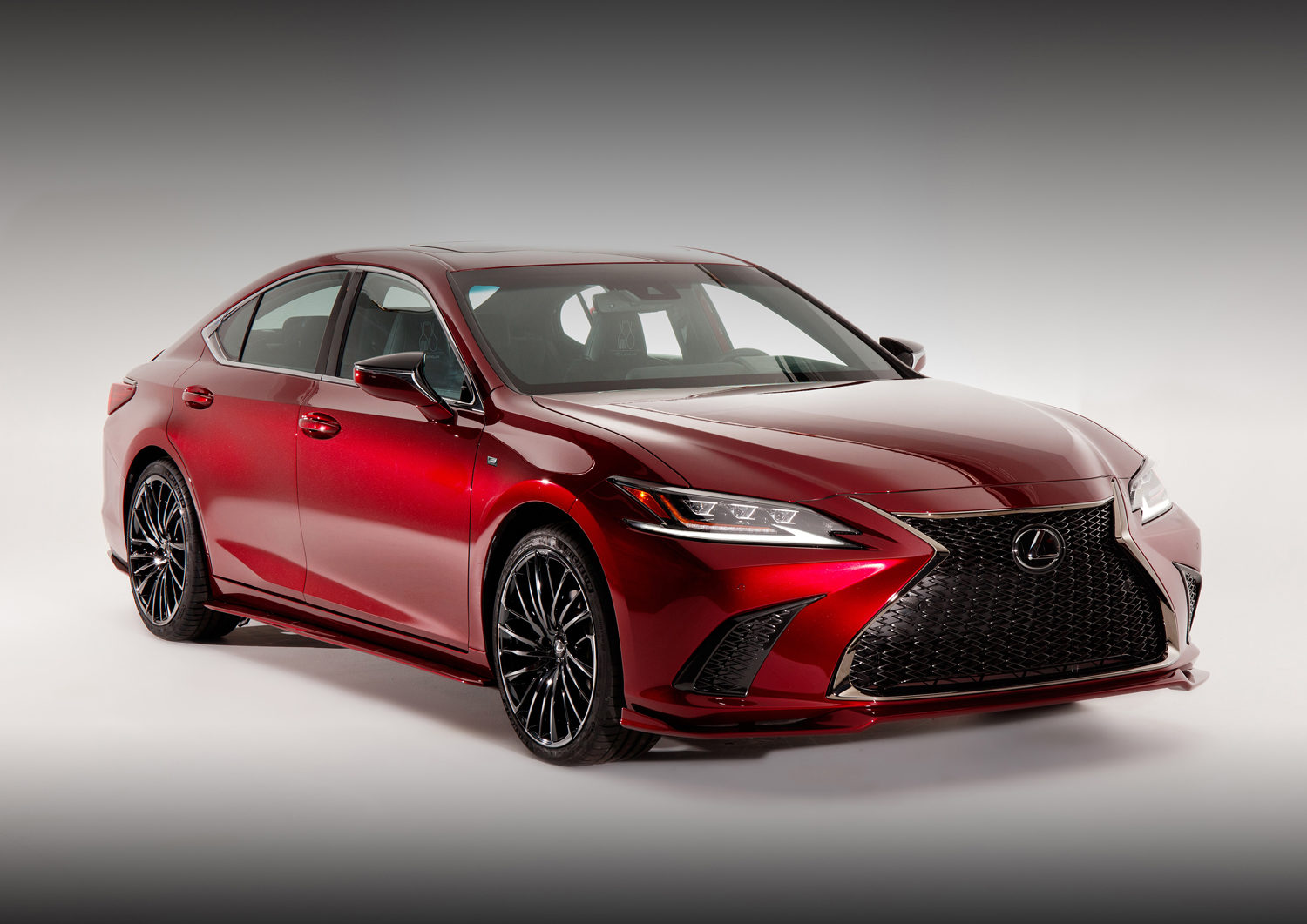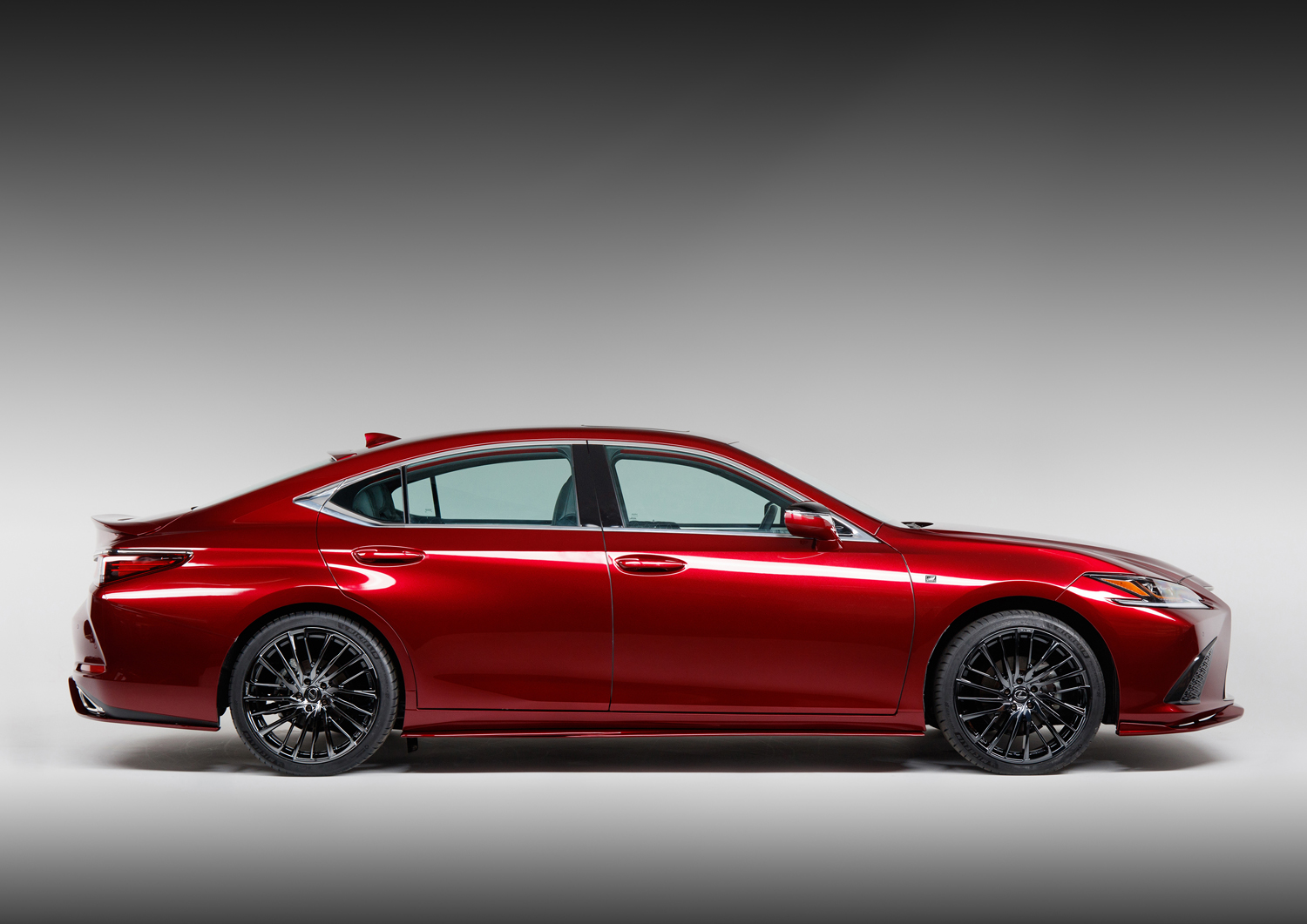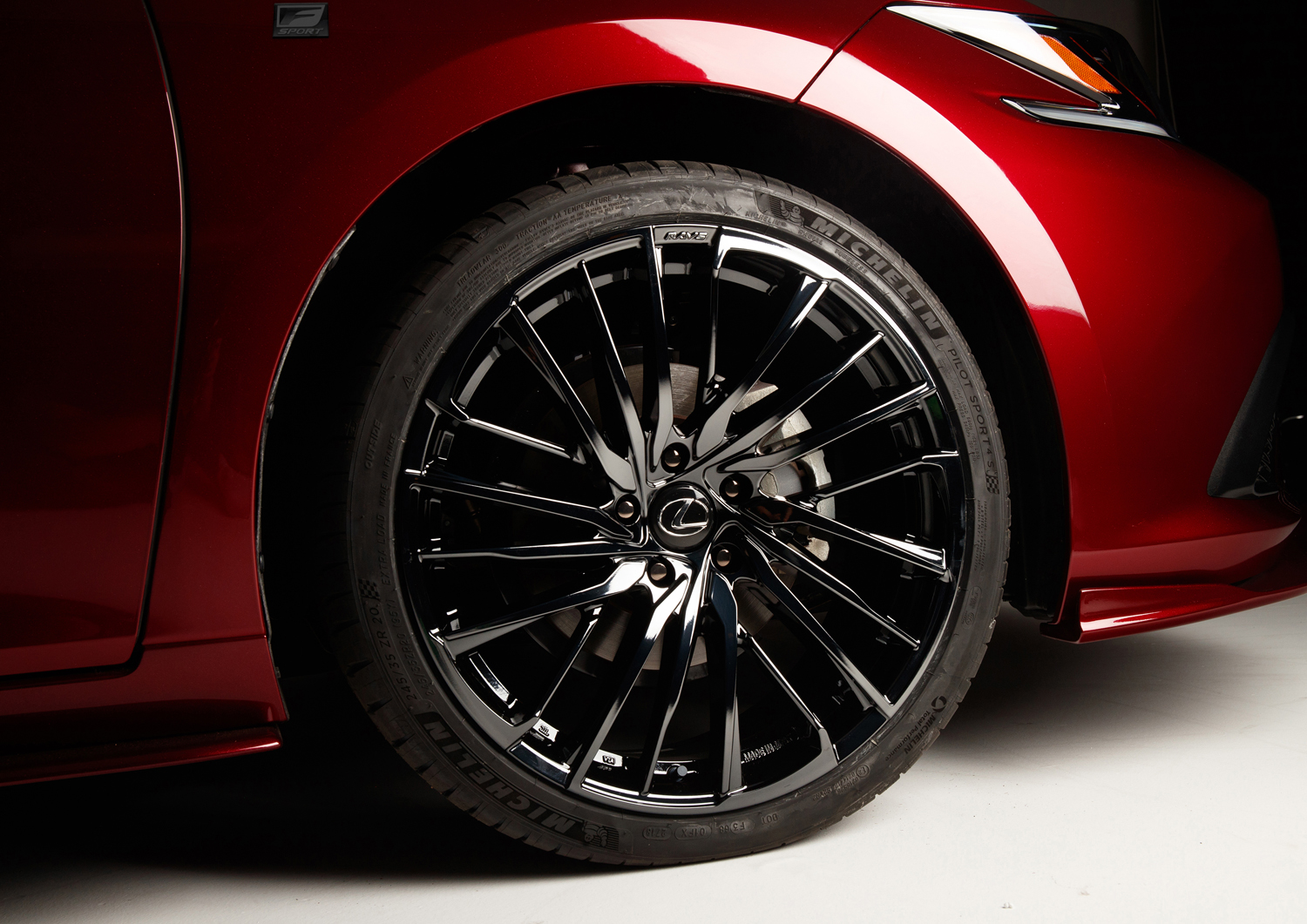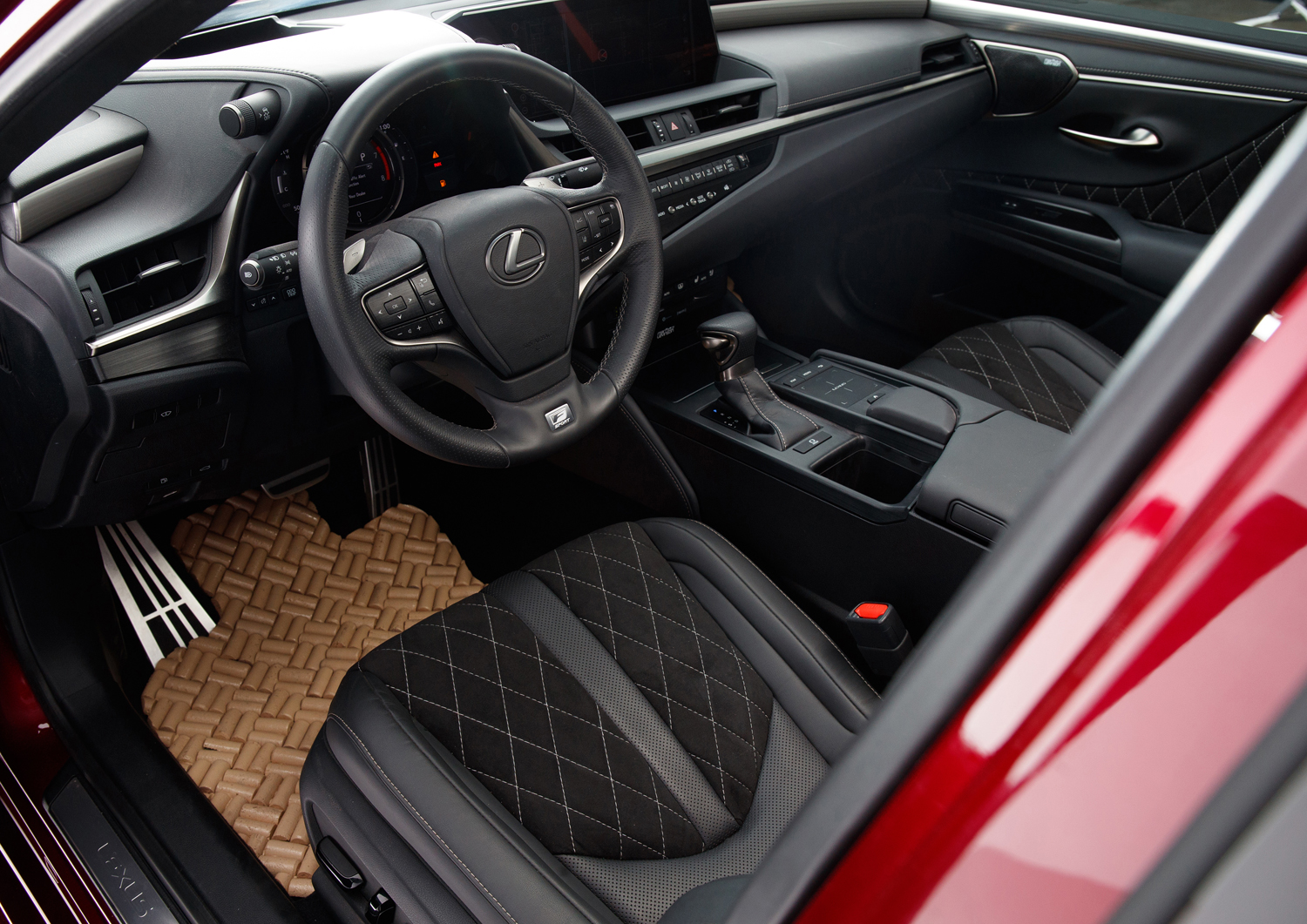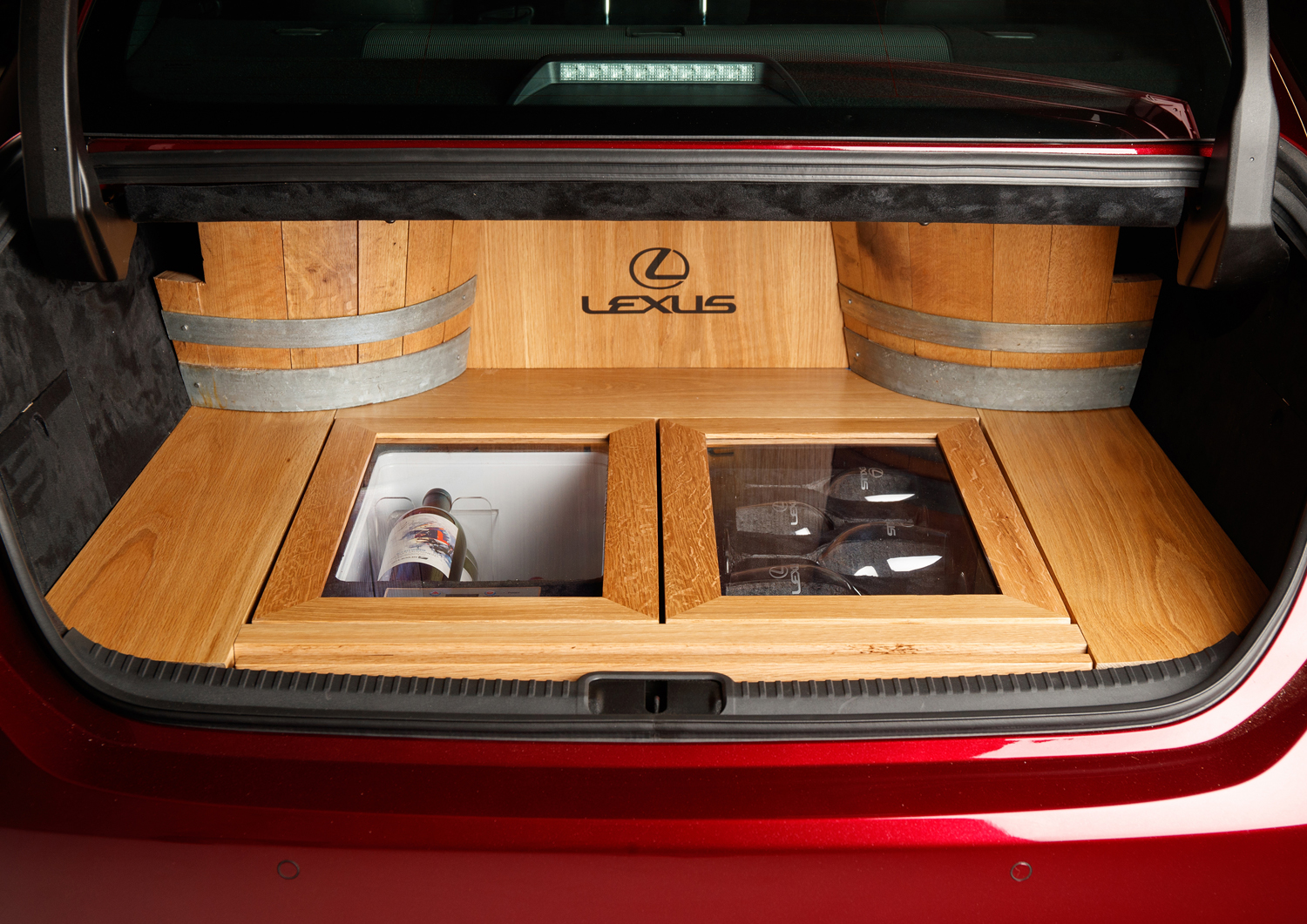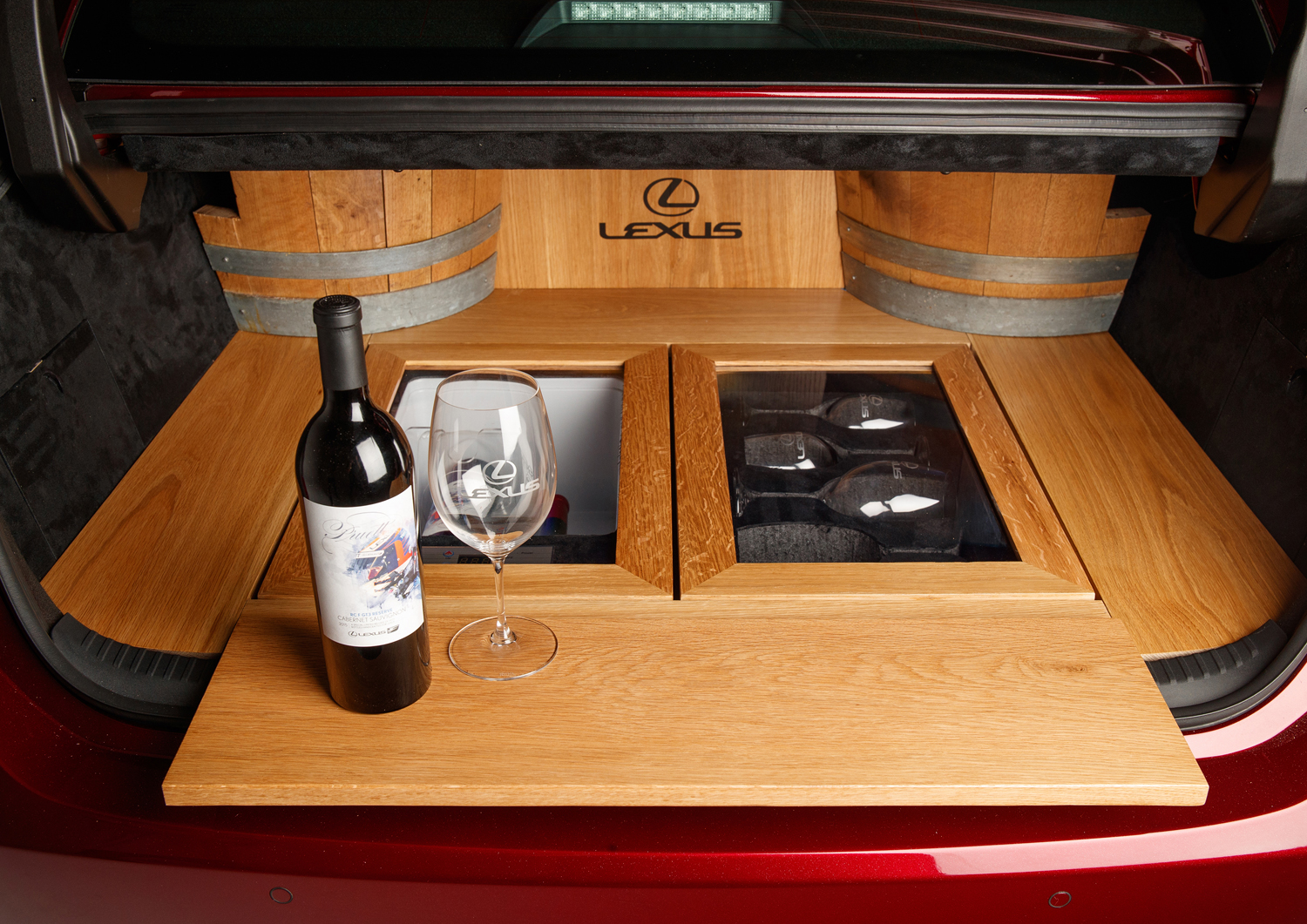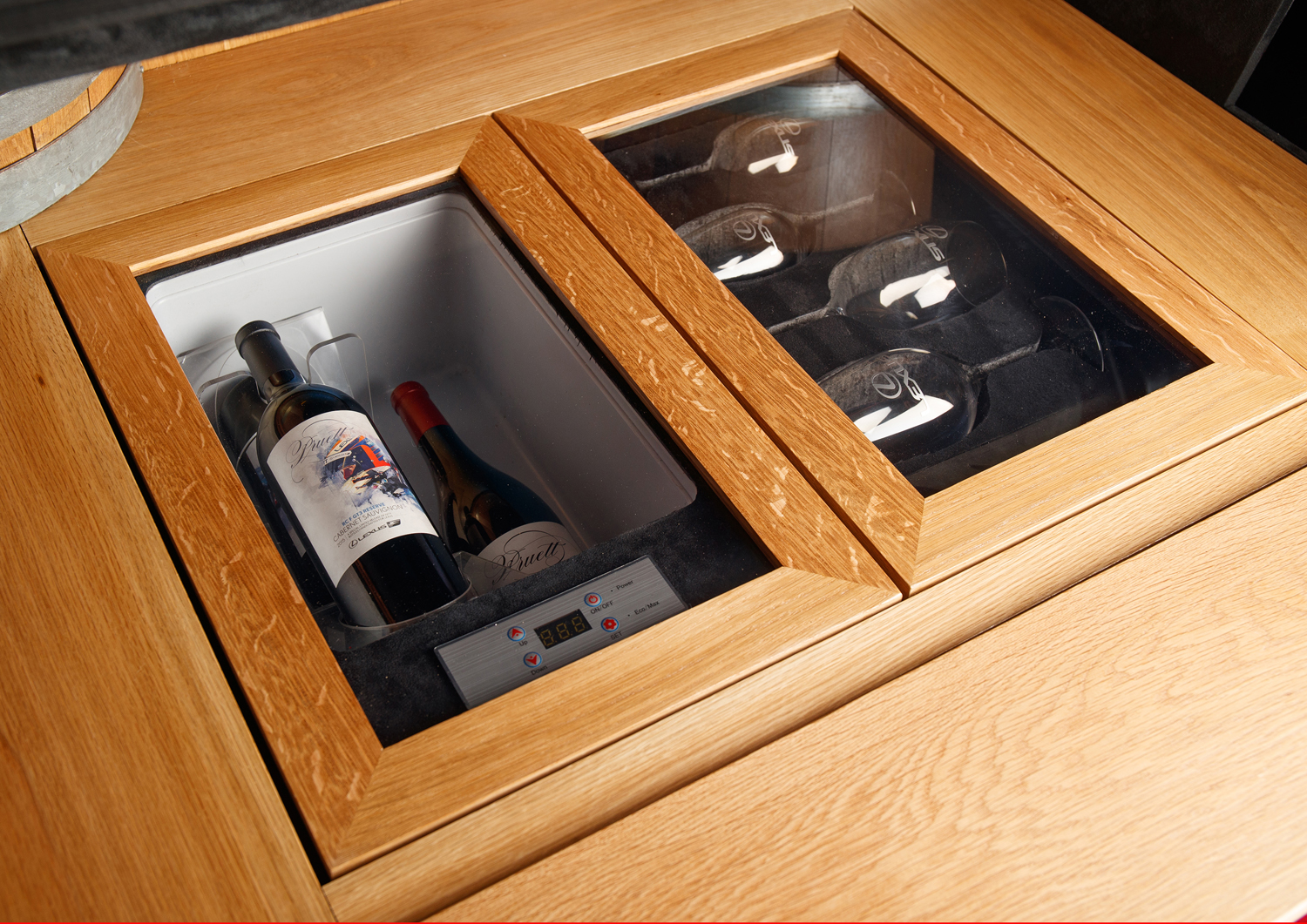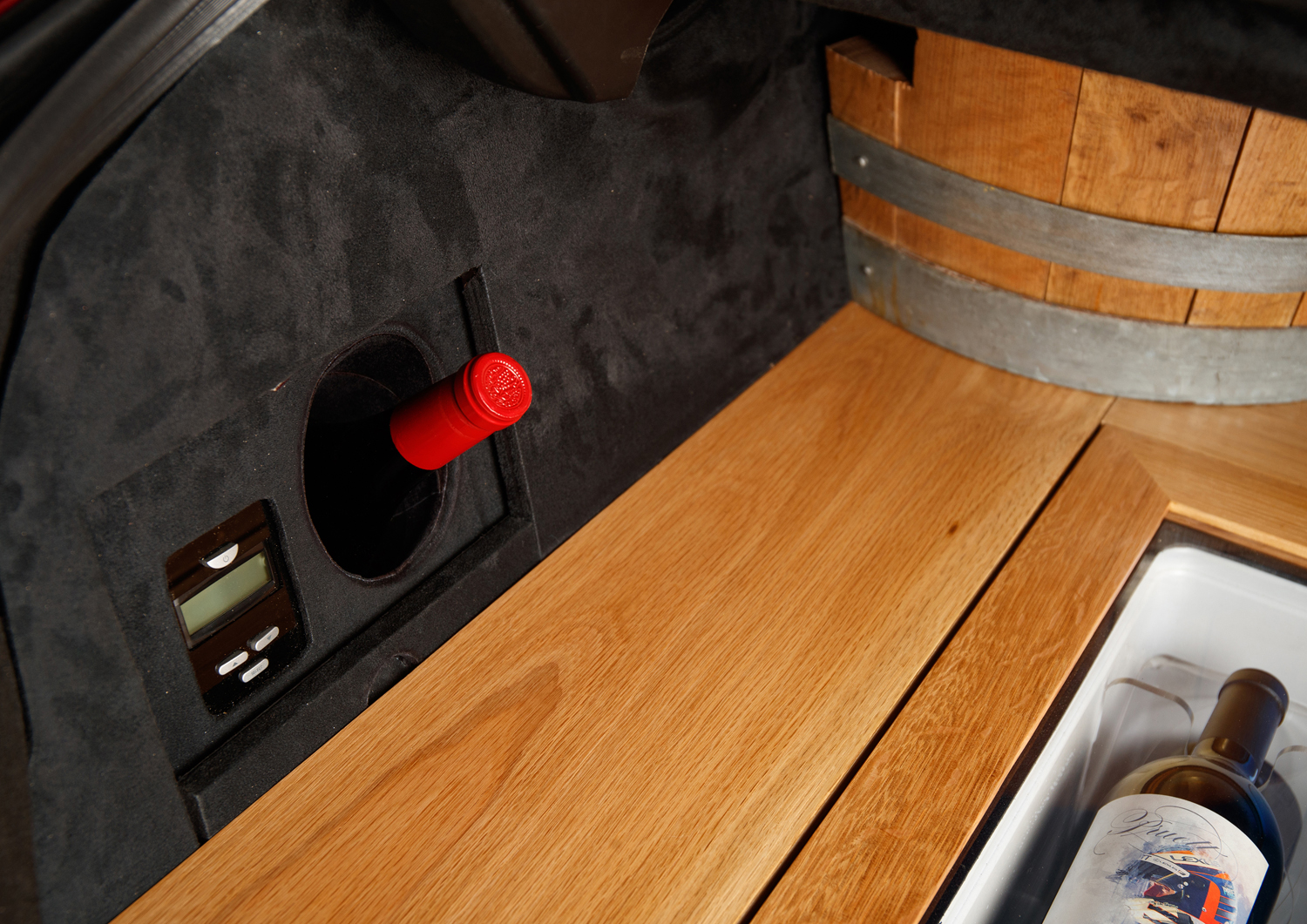At first glance, this dark red 2019 Lexus ES 350 isn’t wild enough to turn heads at the annual SEMA show, an event which improbably brings Hot Wheels-like creations and 1,000-horsepower hot rods to life. Pop the trunk and you’ll see exactly why Lexus bothered to ship the sedan to Las Vegas.
You’re on the right track if the deep, lustrous red paint reminded you of a bottle of red wine. Lexus integrated a fully functional wine cooler into the compartment below the floor. It’s deep enough to keep at least six bottles of your favorite wine at a steady temperature. There is a second compartment right next to the wine cooler that lets the driver — who, hopefully, is not the drinker — store four wine glasses, and a cutout for an additional bottle of wine on the left side of the trunk.
Lexus upped the vineyard vibe by surrounding the cooler with an oak floor that hides a fold-out tablet and inserting wine barrels into each corner of the trunk. The ES retains most of its 16.7 cubic feet of trunk space so you’ve got plenty of space left for more cases of red, white, or rosé. The passenger compartment receives floormats made with wine corks, plus wine-themed stitching in the front headrests. It’s an oenophile’s dream come true, though you’ll need to bring your own cheese for wine-pairing trips to the countryside.
The vineyard-friendly modifications stop there; Lexus hasn’t found a way to make the ES’ V6 engine run on pinot noir. Power comes from a 3.5-liter six-cylinder engine that makes 302 horsepower at 6,000 rpm and 267 pound-feet of torque at 4,700 rpm. It sends its power to the front wheels through an eight-speed automatic transmission.
The cars displayed at the SEMA show are rarely an accurate indication of what automakers are preparing to launch in the coming years. They’re wild, outlandish concepts built to turn heads. The custom ES 350 is no exception, for better or worse. Don’t expect to see a wine cooler appear on Lexus’ ordering guide anytime soon. The firm has nonetheless demonstrated it’s entirely possible to integrate one into its sedan — the ball is in your court, DIYers.

